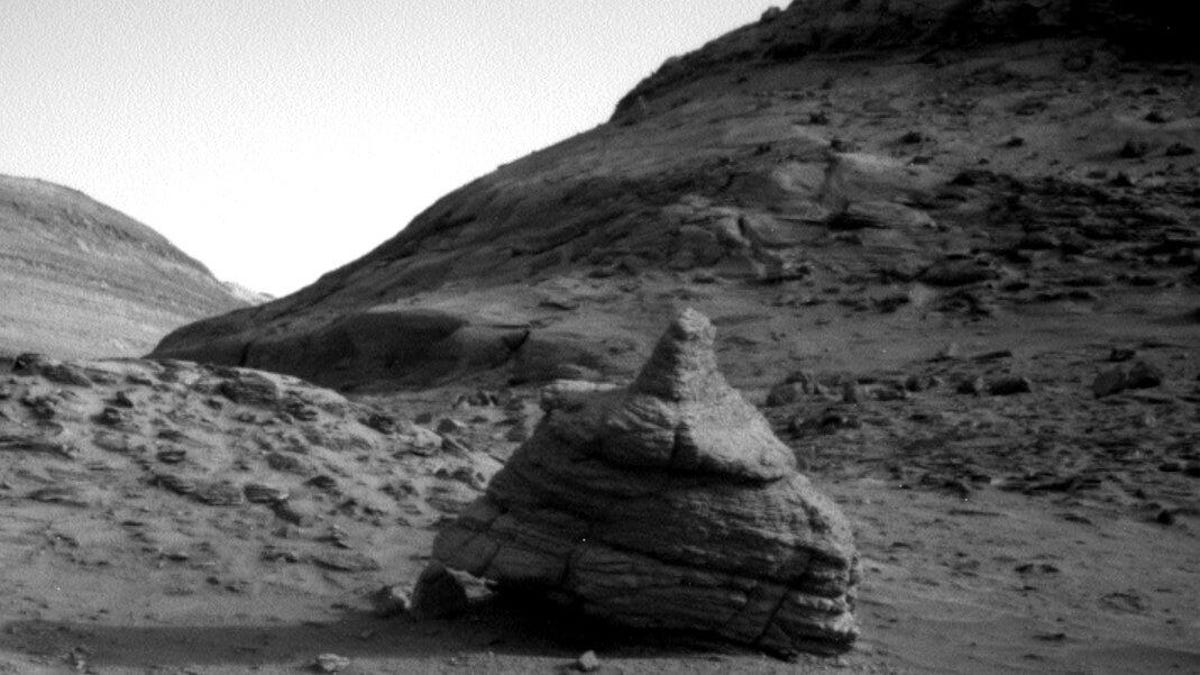NASA Mars Rover Inspects Wonderfully Funky Rover-Size Boulder
Curiosity took a detour to check out a particularly interesting rock that, let's face it, looks like a poo emoji.
I feel very connected to NASA's Curiosity rover right now. I, too, have detoured from my hiking path to get a closer look at a fascinating rock. The wheeled explorer was planning to check out some cliffs when it noticed a large boulder that had fallen down, giving the team a preview of where it was heading.
The boulder in question is quite a looker and it's about the size of the rover itself, which is comparable to a small SUV. Space writer Jason Major made a composite out of three different rover images from July 15 to give a better view of the rock.
ohai weird Mars rock. no that's ok. You just keep being you.
— Jason Major (@JPMajor) July 18, 2022
(Composite of three right navcam images from @MarsCuriosity taken July 15 / sol 3533) pic.twitter.com/mmNjuwrTsF
Twitter users suggested it looked like everything from a fossilized acorn to poop to a tortoise wearing a sombrero. The rover's team nicknamed the rock "Ilha Novo Destino," after an island in Brazil. It was intriguing enough to warrant a closer look by Curiosity.
USGS planetary geologist Lauren Edgar wrote in a mission update last week that boulders like this "can help inform our understanding of the upcoming stratigraphy, so we thought it was worth a trip to this 'new island destination' for the weekend."
Planetary geologist Aster Cowart highlighted a couple of views of Curiosity's outstretched robotic arm getting up close to the boulder along with what it saw using its Mars Hand Lens Imager camera.
We had to really streeeeeetch Curiosity's arm to get good MAHLI imaging of the small boulder the size of a large rover, but it looks like the hard work of the rover planners paid off in abundance! pic.twitter.com/6iUDQKwEFB
— dr.aster 🏳️⚧️ (@TerraSabaea) July 16, 2022
Taken together, the series of images from Mars show how Curiosity's team is able to adjust plans on the fly to inspect interesting details along the way.
The rover has been in the Gale Crater since 2012. One of its goals is to learn whether this area of Mars might have been habitable for microbial life in the deep past.
The rover is exploring the lower regions of Mount Sharp, the massive central peak inside the crater. It's seen some eye-opening rock formations, from tiny "spikes" to a natural niche that a lot of people think looks like a doorway. The goofy big boulder is both fun to look at and scientifically fascinating, a beautiful combination.


